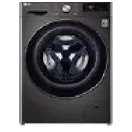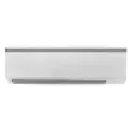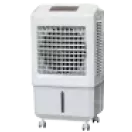Browse through a wide selection of fans on Bajaj Mall, featuring a variety of models from the manufacturer. Browse through detailed product specifications and reviews to make an informed decision. For more options, visit any of Bajaj Finserv’s 1.5 lakh partner stores in 4,000 cities. Explore top brands, select your preferred model, and benefit from Easy EMI and zero down payment options, exclusively with Bajaj Finserv.
3 min
20-Mar-2025
Ceiling fans are essential for comfort and energy-efficient cooling, but over time, they may develop speed issues, unusual noises, or rotation problems. Identifying these issues early ensures smooth operation and prolonged durability. Let us explore how you can fix these common issues.
Browse through a wide selection of fans on Bajaj Mall, featuring a variety of models from the manufacturer. Browse through detailed product specifications and reviews to make an informed decision. For more options, visit any of Bajaj Finserv’s 1.5 lakh partner stores in 4,000 cities. Explore top brands, select your preferred model, and benefit from Easy EMI and zero down payment options, exclusively with Bajaj Finserv.
Browse through a wide selection of fans on Bajaj Mall, featuring a variety of models from the manufacturer. Browse through detailed product specifications and reviews to make an informed decision. For more options, visit any of Bajaj Finserv’s 1.5 lakh partner stores in 4,000 cities. Explore top brands, select your preferred model, and benefit from Easy EMI and zero down payment options, exclusively with Bajaj Finserv.
Common issues with ceiling fans: Noise, wobbling
Loose screws and mounting issues: A wobbly fan is often caused by loose screws in the mounting bracket or blade holders, leading to unstable movement.
Unbalanced fan blades: If one blade is heavier or misaligned, the fan may shake while spinning. Using a balancing kit helps restore smooth operation.
Motor humming or buzzing: Faulty wiring, capacitor issues, or motor wear can cause a constant humming noise, reducing efficiency.
Blade warping or misalignment: Over time, wooden or plastic blades may bend, causing an uneven airflow. Regular cleaning and alignment help prevent this.
Check for compatibility: Using a living room fan designed for large spaces ensures better airflow and stability.
Worn-out bearings or lack of lubrication: A noisy fan may result from dry bearings inside the motor. Applying lubricant ensures silent operation.
Loose or faulty electrical connections: Improper wiring can create a clicking or buzzing sound, affecting the fan’s speed and performance.
Inconsistent speed control: A damaged regulator or worn-out capacitor can cause the fan to run at only one speed or change speeds irregularly. Replacing these components can restore normal function.
Motor overheating: Excessive heat may indicate overuse, poor ventilation, or a worn-out motor winding. Using an energy-efficient fan, such as a steel fan, can prevent overheating.
Fan running too slow: Dust buildup, capacitor failure, or motor issues can slow down the fan’s speed. Cleaning the fan and replacing the capacitor can help restore proper performance.
Reverse rotation issue: If the fan is spinning in the wrong direction, check the wiring connections and capacitor. Some fans also have a direction switch that may need adjustment.
Frequent power fluctuations: Electrical surges can damage the motor over time. Opting for a 1200mm fan with stabiliser support helps maintain consistent performance.
Sudden stopping or jerky movement: This can indicate a loose wire connection, capacitor failure, or worn-out bearings in the motor. Checking the internal wiring and motor alignment helps fix the issue.
Frequent speed fluctuations: If the fan randomly speeds up or slows down, a faulty capacitor or internal wiring problem may be the cause. Consulting a technician ensures safe and effective repairs.
Fan wobbles excessively: While minor balancing issues can be fixed, severe misalignment or a damaged motor housing may require a full replacement.
Outdated models with poor efficiency: If your ceiling fan is over a decade old, upgrading to an energy-efficient model like Atomberg ceiling fans can significantly reduce power consumption.
Motor overheating or burning smell: Overheating fans pose a fire hazard and should be inspected immediately. If the motor is too worn out, replacing the fan is a safer option.
Blade damage affecting airflow: If the blades are warped or cracked, airflow efficiency is compromised. Replacing the blades may work, but if damage extends to the motor, a new fan is recommended.
Disclaimer: The features, availability, and pricing of each model are subject to change and may vary. For the most accurate and up to date information, please visit the official website.
Check for loose screws and fittings: Ensure blade holders, mounting brackets, and motor housing are properly tightened to prevent wobbling or noise.
Lubricate moving parts: Some fans have ball bearings that require occasional lubrication to reduce friction and prevent wear.
Inspect the capacitor and wiring: Faulty capacitors or loose electrical connections can cause speed fluctuations. Regular checks help avoid sudden breakdowns.
Balance the fan blades: If the fan wobbles or vibrates, use a balancing kit to realign the blades for smooth operation.
Keep the motor dust-free: Accumulated dust inside the motor can overheat and reduce efficiency. Use compressed air or a dry cloth for cleaning.
Use the right speed settings: Running the fan at excessively high speeds continuously can wear out components faster. Adjust speeds based on room temperature.
Ensure proper installation height: Fans should be mounted 7–9 feet from the floor to provide optimal airflow and safety.
Turn off the fan when not in use: Reducing unnecessary operation extends the motor’s lifespan and conserves energy.
Check for unusual noises: Grinding or humming sounds indicate potential motor or bearing issues. Address them early to prevent major repairs.
Unbalanced fan blades: If one blade is heavier or misaligned, the fan may shake while spinning. Using a balancing kit helps restore smooth operation.
Motor humming or buzzing: Faulty wiring, capacitor issues, or motor wear can cause a constant humming noise, reducing efficiency.
Blade warping or misalignment: Over time, wooden or plastic blades may bend, causing an uneven airflow. Regular cleaning and alignment help prevent this.
Check for compatibility: Using a living room fan designed for large spaces ensures better airflow and stability.
Worn-out bearings or lack of lubrication: A noisy fan may result from dry bearings inside the motor. Applying lubricant ensures silent operation.
Loose or faulty electrical connections: Improper wiring can create a clicking or buzzing sound, affecting the fan’s speed and performance.
Troubleshooting fan motor and electrical problems
Fan not starting: Check the power supply, switch, and circuit breaker to ensure the fan is receiving electricity. A faulty capacitor may also prevent the fan from turning on.Inconsistent speed control: A damaged regulator or worn-out capacitor can cause the fan to run at only one speed or change speeds irregularly. Replacing these components can restore normal function.
Motor overheating: Excessive heat may indicate overuse, poor ventilation, or a worn-out motor winding. Using an energy-efficient fan, such as a steel fan, can prevent overheating.
Fan running too slow: Dust buildup, capacitor failure, or motor issues can slow down the fan’s speed. Cleaning the fan and replacing the capacitor can help restore proper performance.
Reverse rotation issue: If the fan is spinning in the wrong direction, check the wiring connections and capacitor. Some fans also have a direction switch that may need adjustment.
Frequent power fluctuations: Electrical surges can damage the motor over time. Opting for a 1200mm fan with stabiliser support helps maintain consistent performance.
Sudden stopping or jerky movement: This can indicate a loose wire connection, capacitor failure, or worn-out bearings in the motor. Checking the internal wiring and motor alignment helps fix the issue.
Repair vs replacement: When to call a professional
Unusual noises persist after troubleshooting: If the fan continues to make grinding, buzzing, or clicking sounds despite cleaning and lubrication, it may indicate a motor issue requiring professional repair.Frequent speed fluctuations: If the fan randomly speeds up or slows down, a faulty capacitor or internal wiring problem may be the cause. Consulting a technician ensures safe and effective repairs.
Fan wobbles excessively: While minor balancing issues can be fixed, severe misalignment or a damaged motor housing may require a full replacement.
Outdated models with poor efficiency: If your ceiling fan is over a decade old, upgrading to an energy-efficient model like Atomberg ceiling fans can significantly reduce power consumption.
Motor overheating or burning smell: Overheating fans pose a fire hazard and should be inspected immediately. If the motor is too worn out, replacing the fan is a safer option.
Blade damage affecting airflow: If the blades are warped or cracked, airflow efficiency is compromised. Replacing the blades may work, but if damage extends to the motor, a new fan is recommended.
Updated price list of ceiling fans in 2024
| Model | Price |
| Crompton 1200mm Surebreeze ceiling fan | Rs. 1,764 |
| Croma ECO 2 1200mm 3 blade motor ceiling fan | Rs. 1,899 |
| Havells Festiva 1200mm ceiling fan | Rs. 2,662 |
| Candes Phantom BLDC ceiling fan 1200mm | Rs. 3,749 |
| Orient Electric Subaris Solo 1300mm underlight ceiling fan | Rs. 8,299 |
Disclaimer: The features, availability, and pricing of each model are subject to change and may vary. For the most accurate and up to date information, please visit the official website.
Preventive maintenance tips for long-lasting fans
Clean blades regularly: Dust accumulation can affect airflow and strain the motor. Wipe the blades with a damp cloth to maintain efficiency.Check for loose screws and fittings: Ensure blade holders, mounting brackets, and motor housing are properly tightened to prevent wobbling or noise.
Lubricate moving parts: Some fans have ball bearings that require occasional lubrication to reduce friction and prevent wear.
Inspect the capacitor and wiring: Faulty capacitors or loose electrical connections can cause speed fluctuations. Regular checks help avoid sudden breakdowns.
Balance the fan blades: If the fan wobbles or vibrates, use a balancing kit to realign the blades for smooth operation.
Keep the motor dust-free: Accumulated dust inside the motor can overheat and reduce efficiency. Use compressed air or a dry cloth for cleaning.
Use the right speed settings: Running the fan at excessively high speeds continuously can wear out components faster. Adjust speeds based on room temperature.
Ensure proper installation height: Fans should be mounted 7–9 feet from the floor to provide optimal airflow and safety.
Turn off the fan when not in use: Reducing unnecessary operation extends the motor’s lifespan and conserves energy.
Check for unusual noises: Grinding or humming sounds indicate potential motor or bearing issues. Address them early to prevent major repairs.
Explore fans on EMI with Bajaj Finserv
For those seeking a dependable and efficient fan, you can explore a versatile range of advanced models on Bajaj Mall. Once you have reviewed all the product details, simply visit your nearest Bajaj Finserv partner store to select your preferred model. With financing options from Bajaj Finserv, you can easily purchase your favourite products without worrying about the budget. Additionally, you have the flexibility to choose a convenient repayment tenure, allowing you to settle the cost in affordable Easy EMIs. Bajaj Finserv also offers financing solutions on electronics.Advantages of shopping using Bajaj Finserv’s financing options
- Affordable pricing: Get a fan at a budget-friendly price from any Bajaj Finserv partner store, making your finances easier.
- Easy EMIs: Purchase a fan with flexible repayment plans and spread the cost over convenient Easy EMIs.
- Zero down payment: Select fans come with a zero down payment option, allowing you to buy without any upfront costs.
- Wide range and accessibility: Browse through a vast collection of fans available across various Bajaj Finserv partner stores.
- Complimentary home delivery: Get free home delivery on selected fans, adding to the convenience of your shopping experience.
Bajaj Finserv App for all your financial needs and goals
Trusted by 50 million+ customers in India, Bajaj Finserv App is a one-stop solution for all your financial needs and goals.
You can use the Bajaj Finserv App to:
Apply for loans online, such as Instant Personal Loan, Home Loan, Business Loan, Gold Loan, and more.
You can use the Bajaj Finserv App to:
Apply for loans online, such as Instant Personal Loan, Home Loan, Business Loan, Gold Loan, and more.
- Explore and apply for co-branded credit cards online.
- Invest in fixed deposits and mutual funds on the app.
- Choose from multiple insurance for your health, motor and even pocket insurance, from various insurance providers.
- Pay and manage your bills and recharges using the BBPS platform. Use Bajaj Pay and Bajaj Wallet for quick and simple money transfers and transactions.
- Apply for Insta EMI Card and get a pre-approved limit on the app. Explore over 1 million products on the app that can be purchased from a partner store on Easy EMIs.
- Shop from over 100+ brand partners that offer a diverse range of products and services.
- Use specialised tools like EMI calculators, SIP Calculators
- Check your credit score, download loan statements, and even get quick customer support—all on the app.
Frequently asked questions
What are the common problems with fans?
The most frequent issues with fans include slow speed, excessive noise, and irregular rotation. A faulty capacitor is often the main cause of speed fluctuations, while loose fittings can lead to wobbling. Dust accumulation on blades or inside the motor can also reduce efficiency and increase power consumption. Checking the fan’s wiring, capacitor, and blade balance helps in identifying and fixing the problem.
What is the most common ceiling fan problem?
One of the most common ceiling fan problems is uneven speed or wobbling. This usually happens due to dust buildup, loose screws, or an imbalanced blade alignment. Fans may also produce unusual noises like buzzing or clicking, which often indicate motor issues or electrical faults. Regular cleaning and maintenance help prevent these problems and ensure smooth operation.
Which types of faults occur in a ceiling fan?
Ceiling fans can develop mechanical and electrical faults over time. Some of the common issues include:
Capacitor failure – Causes the fan to run at reduced speed or not start at all.
Wiring issues – Loose connections can cause the fan to stop intermittently.
Blade imbalance – Results in excessive wobbling and inefficient airflow.
Motor overheating – Leads to reduced performance and potential burnout.
Regular maintenance and timely replacement of worn-out components help avoid major breakdowns.
Capacitor failure – Causes the fan to run at reduced speed or not start at all.
Wiring issues – Loose connections can cause the fan to stop intermittently.
Blade imbalance – Results in excessive wobbling and inefficient airflow.
Motor overheating – Leads to reduced performance and potential burnout.
Regular maintenance and timely replacement of worn-out components help avoid major breakdowns.
Why is the ceiling fan not working?
A ceiling fan may stop working due to several reasons, including power supply issues, faulty capacitors, or internal wiring faults. If the switch is functional but the fan does not spin, the motor winding or regulator could be damaged. In some cases, overheating can trigger an automatic shutdown. Checking the wiring, capacitor, and motor condition can help diagnose and resolve the issue. If the problem persists, consulting a technician is recommended.
Show More
Show Less











